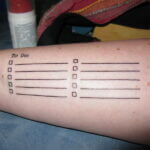The Only TOEFL FAQ You’ll Ever Need
We’ve created this TOEFL FAQ so that people who need to demonstrate their proficiency with the English language can have all the answers they need in a single place.
In the following article, you will be learning about whom the test was created for, along with all kinds of valuable information on scoring, preparation, and where and how to submit. You’ll also get a quick primer with over a dozen valuable tips on how to get the very best score. So, without further ado, let’s begin!
What Is the TOEFL Used For?
First off, TOEFL stands for Test of English as a Foreign Language. It is a test given primarily to non-native speakers. The purpose of taking the test if you fall into that category generally revolves around getting into a school where English is the primary language or showing proficiency with the language to an employer. You also may need it to qualify for a green card (or equivalent) to different countries.
Take a free, practice TOEFL Exam!
How Is the TOEFL Scored?
The TOEFL is scored on a scale from 0-120. It takes the combined 0-30 scores of its four sections, which are Speaking, Listening, Reading, and Writing. Obviously, the “worst” you can do is a 0, which is about as difficult to attain as a 120.
A “passable” TOEFL Score would be 90, or an average of 22.5 on each section (note: you cannot score decimals on the TOEFL so a good average would be 23 per section or a 92 overall). If you wish to be considered for a teacher’s assistant position, you usually need to do higher than this (north of 100).
How Much Does the TOEFL Cost?
The TOEFL can vary in cost depending on when and where you register. It’s not the cheapest exam you’ll encounter, and you can expect to pay around $200. Fortunately, there are multiple ways to pay. You can use credit or debit card, electronic checks, PayPal, paper check, money order, and Western Union Quick Pay.
Is the TOEFL Accepted at US Universities?
The TOEFL is accepted at any US university where you have an interest in enrolling. Again, most institutions will be fine with a 90, but more prestigious universities like Harvard may require a higher score or a passing score in conjunction with other qualifying materials (i.e., extracurricular activities, transcripts from other schools, ACT scores, etc.).
How Long Are TOEFL Scores Valid?
Once you’ve had your TOEFL scores reported, they are good for two years. If you are satisfied with what you’ve scored, then you won’t have to worry about taking it again for that length of time. In the meantime, you’ll want to make sure that you’re submitting those scores in enough time to get in when you plan to.
It usually takes no longer than eight weeks to make sure your scores have been submitted and received by your university. Submission to US universities takes around 20-30 days.
What Is the Difficulty Level of the TOEFL?
Difficult is a subjective term when it comes to tests like these. Some of you will have a very easy time with it while others will struggle. It all depends on your level of familiarity and immersion with the English language. And that means proficiency in Speaking, Writing, Listening, and Reading, which all bring with them their own share of challenges. So, in prepping, make sure you’re using English through all four methods.
What Are All the Countries That Accept TOEFL?
Most civilized countries will accept the TOEFL so it’s not only a matter of getting into US Schools. You can submit and win acceptance virtually anywhere. Currently, there are around 130 countries that acknowledge it.
What Is the Difference Between TOEFL and IELTS?
Another test that often gets grouped together with TOEFL is the IELTS, or the International English Language Testing System exam. The two exams test for similar skill sets, but they are scored differently (0-9 per section for IELTS). This is a TOEFL FAQ, however. If you’d like to know more about the IELTS, here is a link to the official website.
Top TOEFL Study Tips
Like any test, mastering the TOEFL exam requires a mix of strategy and knowledge. To help you achieve your best score, this section will be devoted to the 12 tips that will absolutely raise your score. Let’s keep going!
1. Learn the Format
We’ve already discussed that there are four sections of the TOEFL exam — Listening, Reading, Speaking, and Writing — but what does each of these sections consist of? It’s a good idea to learn it, get comfortable with it, and take as many practice exams as you can before forging ahead.
For Listening, you’ll be required to listen to three or four lectures. Each one will be accompanied by up to six questions to see how well you comprehend what you are hearing. Additionally, there are two or three conversations with five questions each.
For Reading, you’ll be required to read three passages and answer 42 multiple-choice questions. Some questions will ask you for multiple correct answers. More on that in a bit.
For Speaking, you’ll have four tasks along with questions afterward. This section totals only 17 minutes in length, and, once again, you’ll be answering questions related to conversations and lectures.
Lastly, the Writing section is composed of two tasks totaling 50 minutes in length. You will read a passage, listen to a recording, and then type your response.
All of the sections are similar in formatting. They just require you to perform different skill sets. Those skill sets will judge how proficient you are in each aspect of the language.
2. Envision Your Goal
You can’t automatically decide what you’re going to make on the TOEFL, but you stand a much better chance of hitting your target if you know what that target is going into the exam. You know you don’t want to score any less than a 90, but it’s a good idea to aim higher so that if you do fall short from the mark, there’s still enough “room” for a passing score.
Read everything you can ahead of time. Watch videos online. Talk to those who have taken it before you. Give yourself the best chance at a 120, and you’ll be happy with what you get even if it’s not quite where you envisioned.
3. Get Out in Front of It
Do not start studying at the last minute for TOEFL. It’s not like an ordinary exam. If you don’t immerse yourself in the language as much as possible, no amount of extra effort will help you on test day. Watch movies, check out online videos, read English language novels, listen to news broadcasts that are based in the UK and US. Above all, leave as much time as possible to study before the test day.
4. Know Your Content Weak Spots
Just because you read and understand English well, that doesn’t mean you will write it or speak it at the same level of proficiency. Don’t let your confidence in one area get you overconfident in another.
Identify where your weak spots are right away. Focus the majority of your study efforts to those areas. The more you do this, the more it will help solidify your existing strengths.
5. Learn About Test-Taking Strategy in General
Beyond content, you need to learn how to take these types of standardized tests well. Read up on multiple choice and written response in particular. These are the two areas where the test spends most of its time. Learn about strategies and hacks for managing your time, recognizing trick language, and using the process of elimination. All these factors will be of service on the actual exam.
6. Use Reputable Preparation Materials
Not all TOEFL materials are created equally. 4Tests has an excellent TOEFL prep resource free-of-charge that you can access here. That said, you’ll want to use many different sources, paid and free, to get a comprehensive overview of the types of tests and questions out there. You can never over-prepare!
7. Work on Vocabulary Every Day
Learn new words every day. You can do this in a number of ways. Sign up for a dictionary app that feeds you a word every day. Oxford has a good one available across all mobile formats. You can also read books and figure out new words from context clues (the best method) or watch movies and figure things out from the accompanying action.
Movies are also good examples of how to differentiate context from verbiage. In other words, sometimes people’s words will not match their actions. This helps bring out distinctions in tone and deception.
8. Don’t Get Tricked!
Multiple choice questions on the TOEFL can be intentionally deceptive. In many cases, if you’re not reading the question carefully, you could end up leaving an incomplete answer. Watch for when the questions ask you to “check all that apply” or “choose X answers.” There is the temptation to get ahead of yourself and select the first answer you know to be right. But if you stop there, you’re going to end up getting just half-credit for that question.
9. Skim the Passage First
Reading strategies are very important when it comes to making it through the TOEFL intact. You could read each passage very carefully, but that might leave little time to answer the questions. A better strategy is to brush up first on your “skimming” skills.
This means you should read quickly over the passage, dashing over non-essential words like a, an, and the. You may not understand every single thing that you see at first glance, but you’ll get familiar with where to turn for answers to the questions that you don’t know outright. That sort of spatial awareness is vital to finding the key details when you need them and leaving yourself time to double-check your work.
10. Watch English-Language News and Podcasts
There’s no better way to get a feel for the way a language changes naturally than how it is currently being spoken. It is a news person’s or podcaster’s mission to make the inaccessible accessible. They do this through information, entertainment, and commentary that sheds voluminous light on how the language is used. The more you listen to these types of media, the better off you’ll be on the Listening portion of the exam.
11. Focus on Enunciation
Poor enunciation skills can cause you to lose credit on the speaking part for answers that you actually know. Slow down. Use a normal pace. Make sure you’re saying the word that’s in your head, not trying to get through the Speaking part of the exam as soon as possible. Attention to detail is what will get you closer to a 120.
12. Look at Sample Responses That Scored Well
The best examples for you to turn to when it comes to getting a perfect score are highly-scored responses. Fortunately, there are many places you can turn, through both print and electronic, paid and non-paid materials. Look at the tests that have ranked well with scorers. Break them down line-by-line to see why the test-taker excelled. Focus your efforts here instead of the faulty responses, and you’ll be much closer to a passing score.
Revisit This TOEFL FAQ As Often As You Need
We hope you found this TOEFL FAQ to be enlightening and that it will prepare you for the challenge of getting the very best score possible. If you have any more questions that we haven’t covered, or if you’d like to know more about the formatting and test-taking tips, please let us know in the comments section below. Good luck!
[Featured Image by Flickr Creative Commons]








